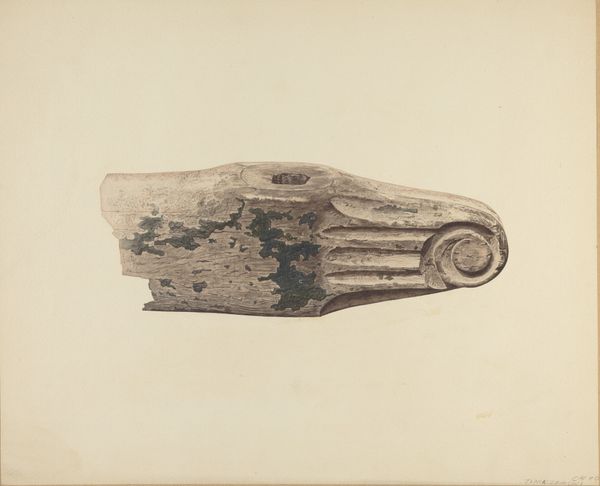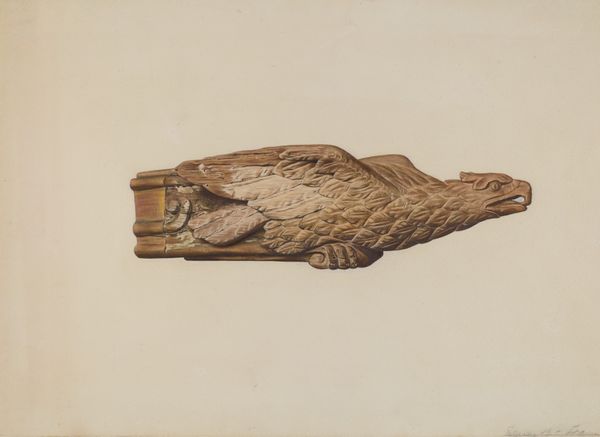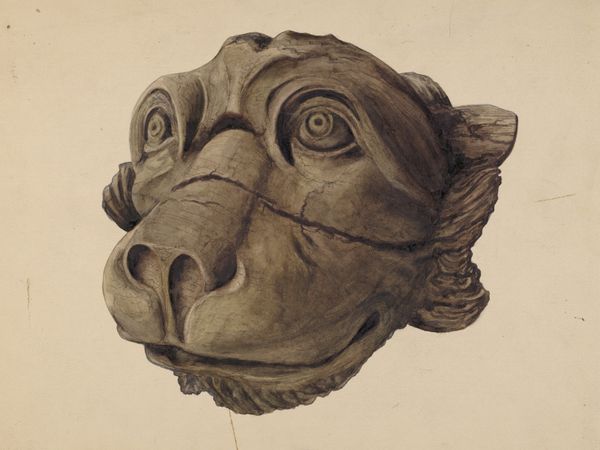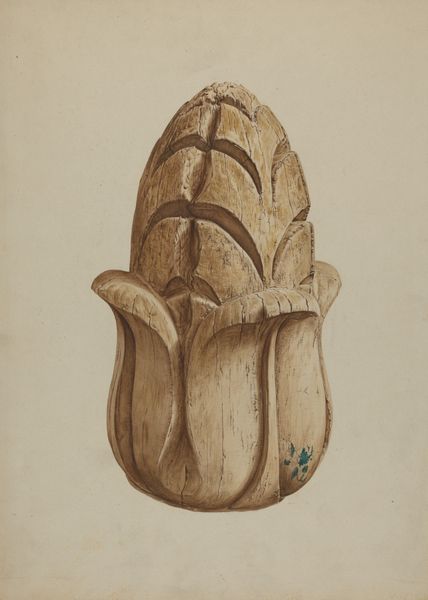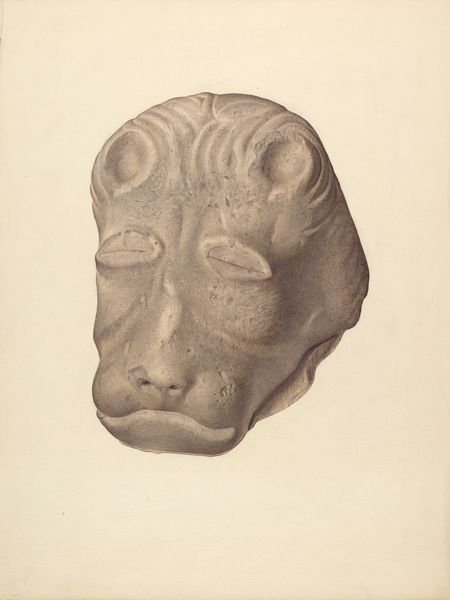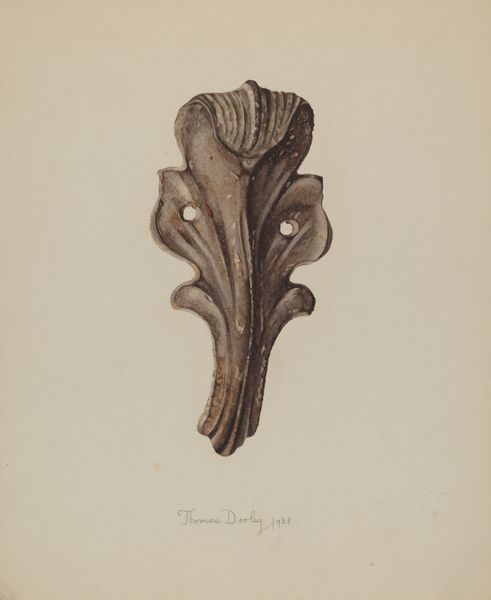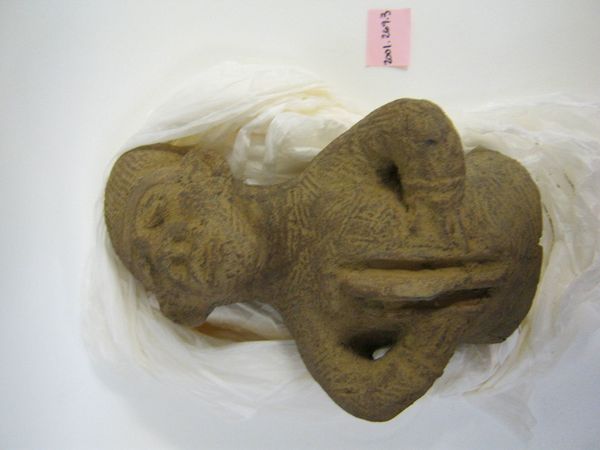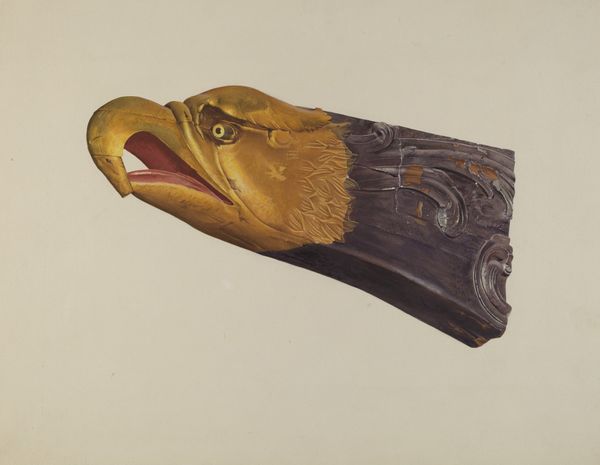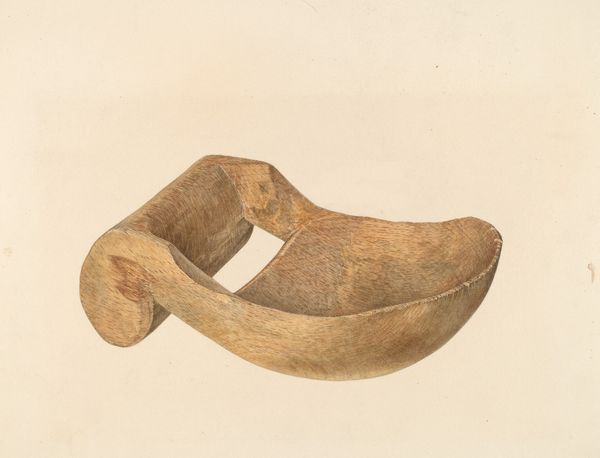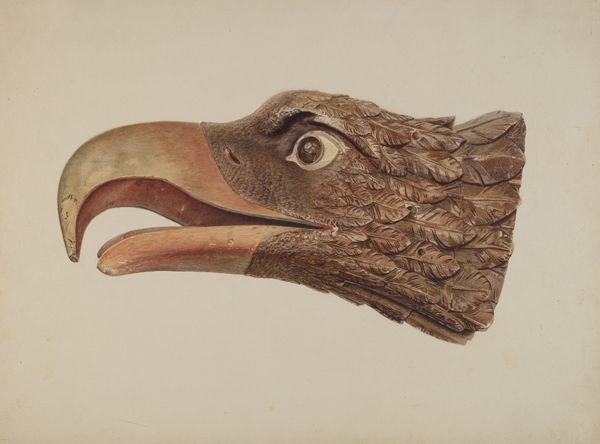
drawing, carving, sculpture, wood
#
portrait
#
drawing
#
carving
#
animal
#
sculpture
#
charcoal drawing
#
form
#
oil painting
#
sculpture
#
wood
#
charcoal
#
realism
Dimensions: overall: 36.4 x 48.9 cm (14 5/16 x 19 1/4 in.)
Copyright: National Gallery of Art: CC0 1.0
Editor: Here we have "Eagle's Head," a wooden sculpture made sometime between 1935 and 1942 by an anonymous artist. It's powerfully austere, the way the artist has simplified the form down to such basic shapes. What strikes you when you look at it? Curator: The carving immediately brings to mind the complex relationship between humans and the natural world, and how often we project our values onto animal forms. Consider the eagle – historically, it's been used as a symbol of power and authority, often linked to empires and nations seeking to legitimize themselves. Why do you think that symbolism endures? Editor: Well, there’s a raw strength in the image of an eagle. The artist, even in this simplified form, really captures its commanding presence, especially through the eye. But given that the artist is anonymous, could this be a critique, rather than a celebration, of power? Curator: Exactly! Anonymity itself speaks volumes. Is the artist consciously obscuring their identity to deflect criticism, or is it about removing the ego from the creative process? It prompts questions about authorship, artistic intention, and whether we, the viewers, are complicit in upholding these power structures by admiring their symbols. Can art truly separate from the cultural frameworks of its creation? Editor: I never considered that...so, seeing beyond the aesthetic qualities allows us to think about the social role of art? Curator: Absolutely. We have to ask: who is this sculpture *for*, and what ideologies might it be reinforcing, or perhaps subverting? Understanding the broader context transforms our understanding of the work itself. Editor: This has given me a totally different way to think about this artwork. Thank you. Curator: Likewise. I appreciate the challenge to my own assumptions. Looking closely encourages crucial dialogues about art, identity, and our shared history.
Comments
No comments
Be the first to comment and join the conversation on the ultimate creative platform.
